INTRODUCTION
ORIGIN:
Patola known as one of the famous silk cloth of india is wooven in PATAN which is 125kms away from AHMEDABAD .The town is also famous for ‘Rani –ki- Vaw’, a step-well made by a queen in honour of her husband. It is now a UNESCO World Heritage site.Most of it is washed away in floods.
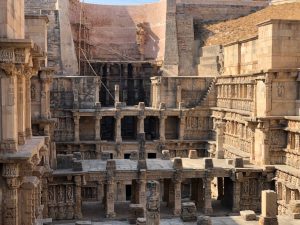
So the Patola made here is known as “PATAN ka PATOLA”,and was used widely.The art of patola sarees flourished with the arrival and settlement of SALVI WEAVERS from karnataka and maharashtra in patan .About 900 years ago in 1143 A.D., around 700 craftsmen from the Salvi community hailing from modern day Karnataka and Maharashtra were brought by king Kumarpal of the Solanki dynasty (ruler of GUJARATH )to his court, in his kingdom’s capital, Patan. These craftsmen lived in Jalna, situated in southern Maharashtra, and were considered to be the finest craftsmen of Patola.
Another fact that describes the elegance of this silk is it’s mention in Premchand’s poetry and several others too.
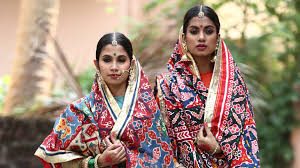
PATOLA IN PATAN
There are many stories that describe the origin of patola in patan one of that is,king Kumarpal was extremely fond of Patola and wore it to all auspicious and formal
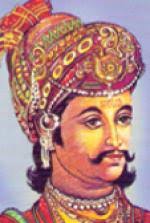
occasions. Since it was made elsewhere, the king found it inconvenient so he shifted the craftsmen to his capital. This way the king could have Patola all for himself, made on demand and customized. Since then, Patola has been produced only in Patan, Gujarat and has lost its roots from where it originally germinated.
WEAVING PROCESS
The weaving is done on a traditional harness loom made up of rosewood and bamboo strips. The loom is slightly tilted from one side because of which 2 people are required to work simultaneously on a loom.
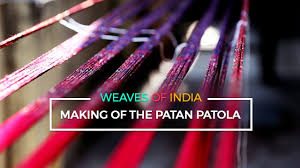
- The first step in the weaving process is to trace sari design on paper.
- Next, the silk yarn is tied using cotton threads as per the design or pattern. The warp (vertical) and weft (horizontal) threads are tied separately.
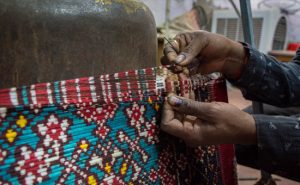
- Thereafter the entire yarn is dyed in the desired colour. This tying, untying, retying and dying is repeated for each colour. If there are 4 colours in a sari, the process will be done 4 times to get all the 4 colours.
- Once the dying part is complete, the yarn is put on the loom to weave the cloth.
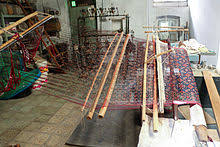
Patola saris cost Rs 1,00,000/ or above today. Since Patola saris are expensive, they are predominantly bought by the rich. Having said that, if you know the weaving process and effort that goes into making such saris, you might not complain about the price.
SPECIALITY OF PATOLA
Colours:
Natural dyes like catechu, cochineal, indigo, turmeric, natural lakh, harde, madder roots, manjistha, ratnajyot, katha, kesudo, pomegranate skin, henna, marigold flower are employed in making Patola. While Alum, copper sulphate, ferrous sulphate, tin chloride, potassium dichromate and other mordents are also used.
Designs and Motifs:
Typically, abstract designs and geometric patterns are unfolded on Patola. While some designs include elephants, human figures, kalash, flowers, shikhar, paan, parrot etc. other designs are inspired by the heritage architecture of Gujarat. You can clearly see intricate designs from historical monuments coming alive on these beautiful saris. Some more designs include Narikunjar, Navratna,Voharagaji (Manek Chock), Chabbri bath, Chandabhati, Patan Bhatt, Laheriya, Taraliya, Fulbhatt, KesarChandan etc.
SACREDNESS OF PATOLA SILK
Patola isn’t just a piece of cloth, it’s a tradition, and it’s sacred.The craftsmanship of Patola is only passed to the family members belonging to the same community i.e. the Salvis.Patola saris were given to aristocratic women as a part of stridhan during their marriage. They were expected to pass it on to their daughter during her marriage.
The designs used in Patola include shikhar (the square) which denotes security. Elephant, parrot, peacock, kalash (jug) and humans are also used extensively. All these designs are symbolic of saubhagya or good luck for women.
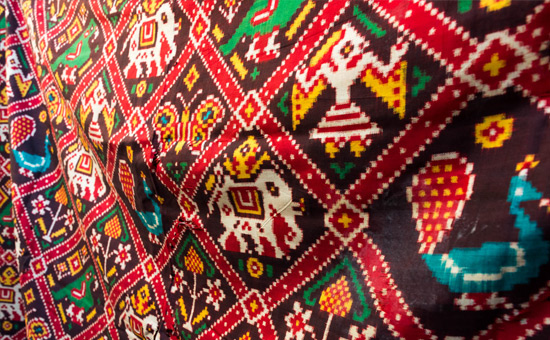
CONCLUSION
Patola is a double Ikat weave, meaning there is no reverse side to it. It can be worn from both the sides. Due to this feature, the colour of Patola doesn’t fade even after a 100 years of usage, although the fabric might wear out. Ikat is central to Patola’s design.In 19th century England and France, Indian textiles were a big hit.The aristocracy of France were so obsessed with Indian clothes that local producers in France started supplying cheap imitation of these clothes with a ‘Made in India’ tag. This way the clientele were happy and local producers made hefty sums of money. Such was the beauty and magnificence of Indian textiles, and it still is.



